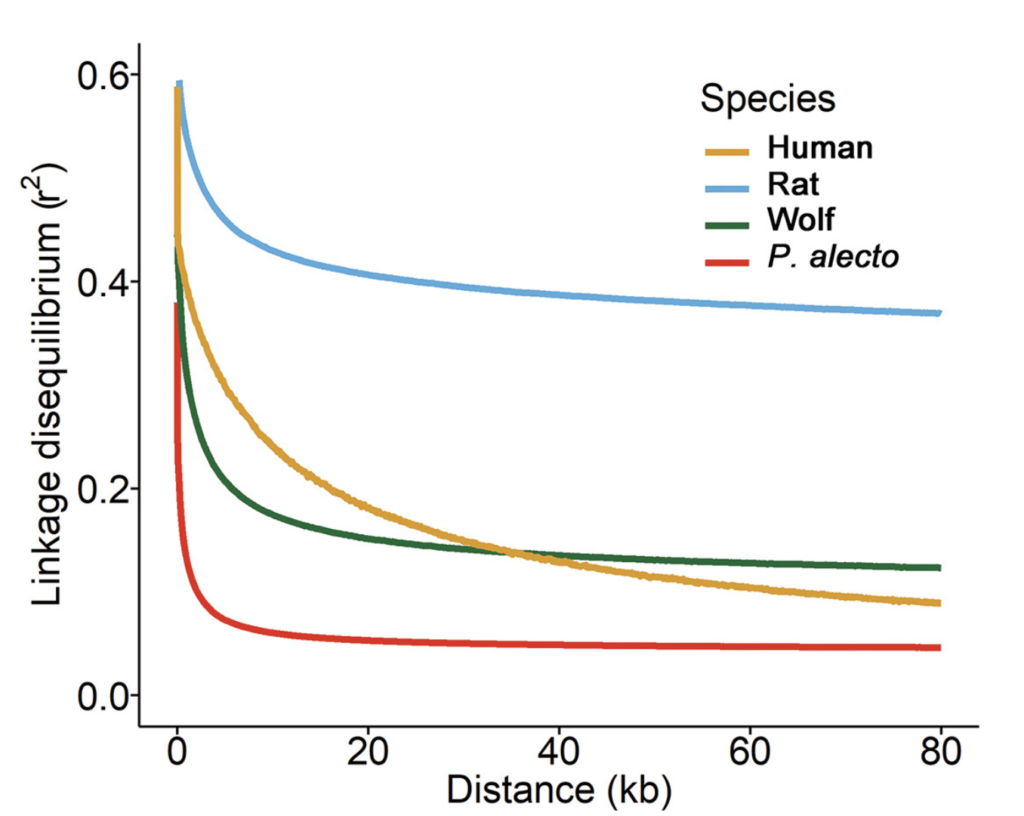By: Conner Dagge, James Harrington, Jason Webber, Liam Zizza (Stonehill College, BIO323: Evolution, Fall 2023)
Overview
We as humans are a part of the class Mammalia, a distinct class of animals that are recognized by hair on their bodies and mammary glands to produce milk. Bats are the only mammal that is capable of prolonged flight but maintains the other identifiable traits of the mammal. The Black Flying Fox (Pteropus alecto) is a species of bat is found in Oceania countries of Australia and Papua New Guinea. It is also found in In the Southeast Asian country of Indonesia. The Black Flying Fox is characterized by a high amount of genetic diversity and its ability to survive extreme natural disasters through adaptation. This information is provided by the article, “Population genomic analysis reveals distinct demographics and recent adaptation in the black flying fox (Pteropus alecto)”. In this article it cites direct evidence for how these unique bats have high genetic diversity compared to other mammals and how they likely survived a possible extinction event thousands of years ago.
The purpose of the article was to study and detail the genetic strengths of bats, as they are one of the most prominent and successful groups of mammals around the world. Bats possess traits and skills that make them stand out compared to other mammals in the animal kingdom. This is precisely why the article, “Population genomic analysis reveals distinct demographics and recent adaptation in the black flying fox (Pteropus alecto)”, chose to conduct research revolving around the black flying fox. They ultimately decided on the specific species of bat based on the size of the population and by how much area the species occupies. The genetic data from the black flying foxes was re-sequenced by the researchers involved from 50 pre-sampled black flying foxes in Brisbane, Australia. The results of the genomic data displayed genetic diversity among the population of 50 black flying foxes to a high degree when compared to other mammalian groups. It also showed that compared to other mammals, black flying foxes have lower amounts of Linkage Disequilibrium. Linkage Disequilibrium is the non-random presence of alleles at different loci in genetic sequences, these alleles are linked and cause the overall genetic diversity of the individual and offspring to decrease. The Black Flying Foxes have a lower amount of Linkage Disequilibrium and therefore have less alleles in their genetic sequences linked and therefore they can provide more diverse genes to their offspring.

This also supports the reason why bats are capable of populating to a high degree while also being capable of existing over a large area. The researchers were also able to determine the inferred demographic history of the black flying foxes from hundreds of thousands of years ago. The data displayed that despite large extinction events such as the eruption of Mount Toba the black flying fox population was able to survive these events. This shows the resilience of the species as they could adapt to the new environment. Many other species likely went extinct resulting from this eruption, yet the black flying fox population managed to survive. The black flying foxes are resilient to extinction level events, but they do show sensitivity to them and could serve as an environmental indicator species.
This is a species that is capable of revealing information about the environment based on their response to certain events. The species is capable of surviving drastic population decreases and bottleneck situations when the total number of alleles is limited due to population size. As mentioned prior, this is because the black flying fox population is so genetically diverse that even with a limited population, there is still enough genetic diversity to avoid a bottleneck event. This may be the cause for why the genetic diversity is so high in black flying fox species, it serves as a protective barrier in the case of a natural disaster event that could limit the population size. This information goes to show that despite the negative connotation of bats, they are truly fascinating creatures with their own interesting forms of survival and evolutionary history.
Article: He, Haopeng, et al. “Population genomic analysis reveals distinct demographics and recent adaptation in the black flying fox (Pteropus alecto).” Journal of Genetics and Genomics (2023). https://doi.org/10.1016/j.jgg.2023.05.002
